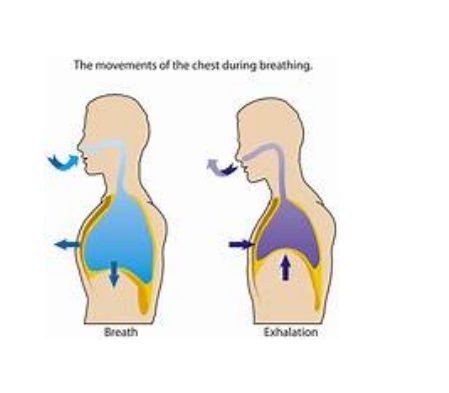ANSWER: Controlled breathing may be easier to say, than to do! Even so, it’s a damn good gateway to other things. This is particularly true if you want to slow yourself down. What better way than to slow your own breathing!
My web site emphasises the value of simple breathing exercises to calm ourselves and there are many different exercises you can identify and practice. I have included some and more can be gleaned from my other pages as well as Internet research.
These exercises work for many people as they focus attention on their physiology – the workings of our bodies – and less on intricate psychological processes. Physiology seems to reach more of us than psychology!
Another ‘plus’ relating to controlled breathing is that many relevant safe experiments take only seconds to make a difference. This means that the experiments can be done frequently without interrupting your day. In addition, I recommend that controlled breathing is done randomly.
Why? Because you and I develop habitual ways of breathing without noticing them. After all, we do do a lot of breathing! In crises, we revert to those habits without thinking.
It takes time and much repetition to re-shape our habits into something that can make a difference.
Thinking about breathing is a beginning
Controlled breathing is a gateway to many other ways of soothing ourselves. I’d ask you to think about controlled breathing – however you do it – as a way to step into many other valuable safe experiments. Controlled breathing is but one step to take in affect regulation (to provide the official title for the process of soothing ourselves). On the subject of affect regulation there is a ton of research you can read so only do as little, or as much, as works for you.
By way of a health warning, there is a lot you can read on this topic and some of it is not very digestible. Affect regulation refers to the ability to maintain or increase positive feelings and a state of well-being. There are many ways to regulate stress and the feelings that go with it. It is a helpful strategy in the treatment of depression and compassion fatigue.
The strategies use in affect regulation have even spawned yet another ‘therapy’; entitled Emotion Regulation Therapy (ERT) (*). This model highlights the role of emotion acceptance (‘just noticing’, as I have labelled it) and practical management strategies at its core.
‘Treatment’ involves psycho-education, monitoring and measurement and respect for the past as information. Also, skills training in somatic awareness and regulation is practised alongside tried and trusted ”safe experiments’ such as graded exposure exercises (“what something different can you do, bit by bit?”).
The model places emphasis on reviewing procedures, relapse prevention and planned endings so I’m not knocking the ‘model’. The hyperlinks demonstrate I am want to use element of the ‘model’; it’s just that I would not want to call it a ‘model’! It’s just part of the process of travelling on the scenic route.
The idea of affect regulation is very old as it arises from the earlier, traditional psychological models. A living expert in this field is Allan Schore and he has several books of over 300 pages devoted to the topic. It is an important subject – infants and children have to learn how to control their responses to the world and carers are generally charged with helping that process. Some of us are more or less capable here.
Therapy often exists to support and repair damage done in early years. Unfortunately, rather like the acquisition of language, it is less easy to put things right in later years.
Some research you might consider
To compound the problem, affect regulation rather depends on a deep understanding of human neuro-science. On this subject, Schore is well worth studying along with Louis Cozolino’s The Neuroscience of Psychotherapy.
For a more readable introduction to the topic, have a look at Sebastian Seung’s Connectome. If you really want to get into the neurology of the matter, you will find Stephen Porges very helpful if you look up his Polyvagal Theory.
If you find the language difficult to follow, then it is important enough to research it further and/or look at the video, below.
A useful text that looks wider is Peter Fonagy; the lead writer of Affect Regulation, Mentalisation and the Development of the Self. Just a few glances at one or more of these texts will reinforce the idea that controlled breathing does, indeed, simply scratch the surface of ways to calm ourselves.
…. and in the world of practising to be different?
…. you could be forgiven for the passing thought that therapy and therapists have a talent for complicating the picture and created a mystery around the change process. I want to be more concerned to identify practical ways in which you can enhance your own skills – on a daily basis – in affect regulation.
For an interesting introduction to a brief affect regulation therapy, take a look at:
For some practical aids to controlled breathing and other calming practices, visit:
http://simplybreathing.com.au/, or
Please note: all sites like this usually command a fee to receive relevant services.
Information on Stephen Porges can be found on:
https://www.stephenporges.com/
with an interview available on You Tube at:
Some minutes in, he will hear him talk about the practical relevance of ‘controlled breathing’.
